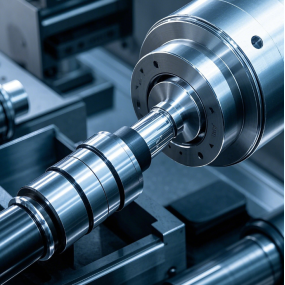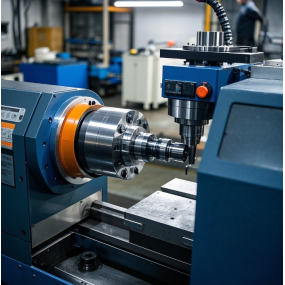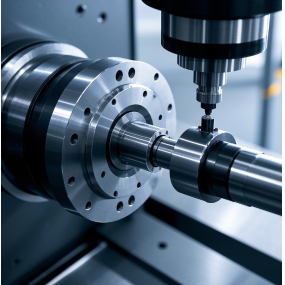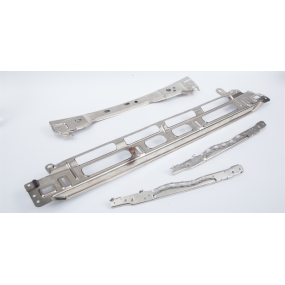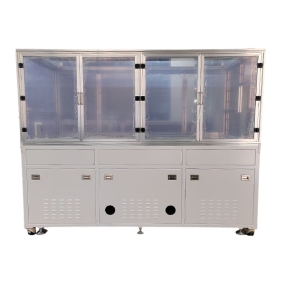Titanium alloy parts are prone to deformation during processing, which is mainly due to the physical characteristics of titanium alloys and some factors in the processing process. The following are some suggestions for solving the deformation problem during the processing of titanium alloy parts: 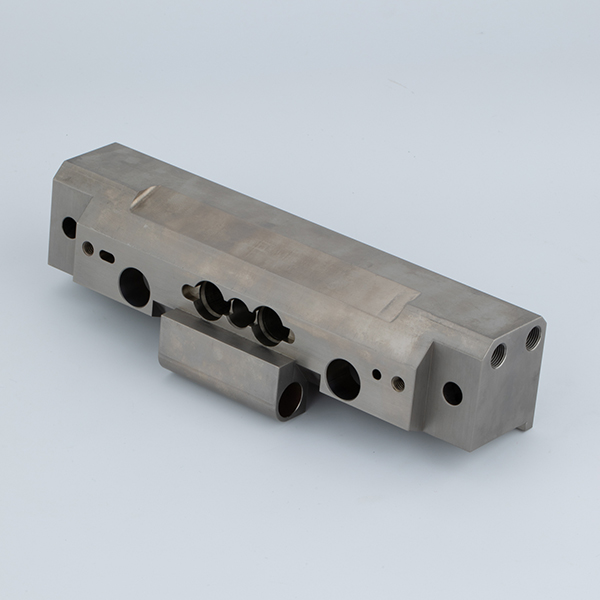 ① Control the processing temperature: The thermal expansion coefficient of titanium alloys is larger than that of general metals, and it is easy to cause deformation when the processing temperature changes. Therefore, during the processing process, the processing temperature should be appropriately increased to increase the plasticity of the material, reduce the hardness and internal stress of the material, and reduce the cutting heat. But care should be taken not to make the temperature too high, otherwise it is easy to cause problems such as oxidation and sticking to the knife of the material. Generally, the processing temperature can be controlled at about 550 C. ② Optimize the cutting parameters: When cutting titanium alloys, appropriate tools and cutting parameters should be used according to the specific situation. Try to use high-speed tungsten steel knives, and reasonably control the cutting depth and cutting speed. The cutting depth should not exceed 50% of the tool diameter, which can reduce the friction between the titanium alloy and the tool and reduce the cutting heat. ③ Reduce processing stress: Titanium alloys will generate a lot of strain and processing stress during processing. These stresses will affect the plasticity and strength of the material and lead to deformation. Therefore, in the processing process, the processing stress should be minimized. For example, by step-by-step processing, using enough clamping force and adjusting the clamping force, etc., to reduce the deformation of parts caused by clamping. ④ Control material quality: Titanium alloys often contain some impurities inside, and these impurities will affect the material characteristics during processing. Therefore, the titanium alloy material should be strictly tested and controlled before processing to ensure that the material quality meets the processing requirements. ⑤ Use suitable processing methods: The processing methods of titanium alloy include mechanical processing, chemical processing, electric discharge machining and laser processing, etc. Appropriate processing methods should be selected according to the specific situation, and corresponding measures should be taken to reduce the deformation during processing. ④ Strengthen clamping and support: During processing, attention should be paid to auxiliary support for the distal end corresponding to the pressing position. Using a large area of soft support can reduce the vibration trend of the part while applying as little support as possible, so that the support force is uniform. During processing, the local rigidity of the part itself can also be used to overcome the deformation caused by processing force. (7) Pay attention to the sharpness of the tool: Insufficient sharpness of the tool can lead to uneven machining force and machining deformation. Therefore, during machining, the sharpness of the tool should be checked regularly to ensure that the tool is sharp and maintains good cutting performance.
① Control the processing temperature: The thermal expansion coefficient of titanium alloys is larger than that of general metals, and it is easy to cause deformation when the processing temperature changes. Therefore, during the processing process, the processing temperature should be appropriately increased to increase the plasticity of the material, reduce the hardness and internal stress of the material, and reduce the cutting heat. But care should be taken not to make the temperature too high, otherwise it is easy to cause problems such as oxidation and sticking to the knife of the material. Generally, the processing temperature can be controlled at about 550 C. ② Optimize the cutting parameters: When cutting titanium alloys, appropriate tools and cutting parameters should be used according to the specific situation. Try to use high-speed tungsten steel knives, and reasonably control the cutting depth and cutting speed. The cutting depth should not exceed 50% of the tool diameter, which can reduce the friction between the titanium alloy and the tool and reduce the cutting heat. ③ Reduce processing stress: Titanium alloys will generate a lot of strain and processing stress during processing. These stresses will affect the plasticity and strength of the material and lead to deformation. Therefore, in the processing process, the processing stress should be minimized. For example, by step-by-step processing, using enough clamping force and adjusting the clamping force, etc., to reduce the deformation of parts caused by clamping. ④ Control material quality: Titanium alloys often contain some impurities inside, and these impurities will affect the material characteristics during processing. Therefore, the titanium alloy material should be strictly tested and controlled before processing to ensure that the material quality meets the processing requirements. ⑤ Use suitable processing methods: The processing methods of titanium alloy include mechanical processing, chemical processing, electric discharge machining and laser processing, etc. Appropriate processing methods should be selected according to the specific situation, and corresponding measures should be taken to reduce the deformation during processing. ④ Strengthen clamping and support: During processing, attention should be paid to auxiliary support for the distal end corresponding to the pressing position. Using a large area of soft support can reduce the vibration trend of the part while applying as little support as possible, so that the support force is uniform. During processing, the local rigidity of the part itself can also be used to overcome the deformation caused by processing force. (7) Pay attention to the sharpness of the tool: Insufficient sharpness of the tool can lead to uneven machining force and machining deformation. Therefore, during machining, the sharpness of the tool should be checked regularly to ensure that the tool is sharp and maintains good cutting performance.
Hello! Welcome to EMAR's website!
 English
English » »
» »
 Spanish
Spanish Arabic
Arabic Spanish Basque
Spanish Basque Portuguese
Portuguese Belarusian
Belarusian Japanese
Japanese Russian
Russian Icelandic
Icelandic Bulgarian
Bulgarian Azerbaijani
Azerbaijani Estonian
Estonian Irish
Irish Polish
Polish Persian
Persian Boolean
Boolean Danish
Danish German
German French
French Filipino
Filipino Finnish
Finnish Korean
Korean Dutch
Dutch Galician
Galician Catalan
Catalan Czech
Czech Croatian
Croatian Latin
Latin Latvian
Latvian Romanian
Romanian Maltese
Maltese Malay
Malay Macedonian
Macedonian Norwegian
Norwegian Swedish
Swedish Serbian
Serbian Slovak
Slovak Slovenian
Slovenian Swahili
Swahili Thai
Thai Turkish
Turkish Welsh
Welsh Urdu
Urdu Ukrainian
Ukrainian Greek
Greek Hungarian
Hungarian Italian
Italian Yiddish
Yiddish Indonesian
Indonesian Vietnamese
Vietnamese 简体中文
简体中文 Haitian Creole
Haitian Creole


